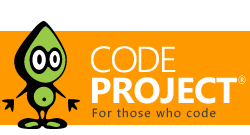|
|
using System;
using System.Runtime.InteropServices;
namespace Pfz.Drawing.Wpf
{
/// <summary>
/// Structure that holds a color in Argb (Bgr32) format.
/// </summary>
[Serializable]
[StructLayout(LayoutKind.Explicit)]
public struct Argb:
IEquatable<Argb>,
IComparable<Argb>,
IComparable
{
/// <summary>
/// Creates a new Argb setting all its components.
/// </summary>
public Argb(byte alpha, byte red, byte green, byte blue)
{
_alpha = alpha;
_red = red;
_green = green;
_blue = blue;
}
/// <summary>
/// Creates a new Argb setting only red, green and blue values. The Alpha value is set to 255.
/// </summary>
public Argb(byte red, byte green, byte blue)
{
_alpha = 255;
_red = red;
_green = green;
_blue = blue;
}
[FieldOffset(3)]
private readonly byte _alpha;
/// <summary>
/// Gets the Alpha (opacity) value.
/// </summary>
public byte Alpha
{
get
{
return _alpha;
}
}
[FieldOffset(2)]
private readonly byte _red;
/// <summary>
/// Gets the Red color element.
/// </summary>
public byte Red
{
get
{
return _red;
}
}
[FieldOffset(1)]
private readonly byte _green;
/// <summary>
/// Gets the Green color element.
/// </summary>
public byte Green
{
get
{
return _green;
}
}
[FieldOffset(0)]
private readonly byte _blue;
/// <summary>
/// Gets the Blue color element.
/// </summary>
public byte Blue
{
get
{
return _blue;
}
}
/// <summary>
/// Gets the combination of this color with an "old color".
/// This will only work if Alpha is different than 255. If not, the actual color will be returned.
/// </summary>
public Argb CombineOver(Argb oldColor)
{
byte sourceAlpha = _alpha;
if (sourceAlpha == 255)
return this;
int remainingAlpha = 255 - sourceAlpha;
byte oldAlpha = oldColor._alpha;
byte combinedAlpha = 255;
if (oldAlpha != 255)
{
remainingAlpha = (remainingAlpha * oldAlpha) / 255;
combinedAlpha = (byte)(sourceAlpha + remainingAlpha);
sourceAlpha = (byte)(255 - remainingAlpha);
}
int red = ((_red * sourceAlpha) + (oldColor._red * remainingAlpha)) / 255;
int green = ((_green * sourceAlpha) + (oldColor._green * remainingAlpha)) / 255;
int blue = ((_blue * sourceAlpha) + (oldColor._blue * remainingAlpha)) / 255;
Argb combinedColor = new Argb(combinedAlpha, (byte)red, (byte)green, (byte)blue);
return combinedColor;
}
/// <summary>
/// Combines this color with another color.
/// The highest alpha is kept.
/// </summary>
public Argb CombineIn(Argb oldColor)
{
byte sourceAlpha = _alpha;
if (sourceAlpha == 255)
return this;
int remainingAlpha = 255 - sourceAlpha;
int red = ((_red * sourceAlpha) + (oldColor._red * remainingAlpha)) / 255;
int green = ((_green * sourceAlpha) + (oldColor._green * remainingAlpha)) / 255;
int blue = ((_blue * sourceAlpha) + (oldColor._blue * remainingAlpha)) / 255;
Argb combinedColor = new Argb(oldColor._alpha, (byte)red, (byte)green, (byte)blue);
return combinedColor;
}
/// <summary>
/// Combines this color with an old color using the given combineMode.
/// </summary>
public Argb Combine(Argb oldColor, ColorCombineMode combineMode)
{
switch (combineMode)
{
case ColorCombineMode.Replace: return this;
case ColorCombineMode.CombineIn: return CombineIn(oldColor);
case ColorCombineMode.CombineOver: return CombineOver(oldColor);
}
throw new ArgumentException("Unknown value for combineMode.", "combineMode");
}
/// <summary>
/// Gets the HashCode of this color.
/// </summary>
public override int GetHashCode()
{
return (_alpha << 24) | (_red << 16) | (_green << 8) | _blue;
}
/// <summary>
/// Compares this Argb color with another object.
/// </summary>
public override bool Equals(object obj)
{
if (obj is Argb)
{
Argb other = (Argb)obj;
return Equals(other);
}
return false;
}
/// <summary>
/// Compares this Argb color with another one.
/// </summary>
public bool Equals(Argb other)
{
return _alpha == other._alpha && _red == other._red && _green == other._green && _blue == other._blue;
}
/// <summary>
/// Compares two Argb instances for Equality.
/// </summary>
public static bool operator == (Argb a, Argb b)
{
return a.Equals(b);
}
/// <summary>
/// Compares two Argb instances for Inequality.
/// </summary>
public static bool operator !=(Argb a, Argb b)
{
return !a.Equals(b);
}
private int _ApplyDifference(int oldDifference, int firstValue, int secondValue)
{
int newDifference = firstValue - secondValue;
if (oldDifference == 0)
return newDifference;
if (oldDifference < 0)
return oldDifference - Math.Abs(newDifference);
return oldDifference + Math.Abs(newDifference);
}
/// <summary>
/// Compares two colors and returns their numeric difference.
/// </summary>
public int CompareTo(Argb other)
{
int difference = 0;
difference = _alpha - other._alpha;
difference = _ApplyDifference(difference, _red, other._red);
difference = _ApplyDifference(difference, _green, other._green);
difference = _ApplyDifference(difference, _blue, other._blue);
return difference;
}
#region IComparable Members
int IComparable.CompareTo(object obj)
{
return CompareTo((Argb)obj);
}
#endregion
}
}
|
By viewing downloads associated with this article you agree to the Terms of Service and the article's licence.
If a file you wish to view isn't highlighted, and is a text file (not binary), please
let us know and we'll add colourisation support for it.
I started to program computers when I was 11 years old, as a hobbyist, programming in AMOS Basic and Blitz Basic for Amiga.
At 12 I had my first try with assembler, but it was too difficult at the time. Then, in the same year, I learned C and, after learning C, I was finally able to learn assembler (for Motorola 680x0).
Not sure, but probably between 12 and 13, I started to learn C++. I always programmed "in an object oriented way", but using function pointers instead of virtual methods.
At 15 I started to learn Pascal at school and to use Delphi. At 16 I started my first internship (using Delphi). At 18 I started to work professionally using C++ and since then I've developed my programming skills as a professional developer in C++ and C#, generally creating libraries that help other developers do their work easier, faster and with less errors.
Want more info or simply want to contact me?
Take a look at:
http://paulozemek.azurewebsites.net/
Or e-mail me at: paulozemek@outlook.com
Codeproject MVP 2012, 2015 & 2016
Microsoft MVP 2013-2014 (in October 2014 I started working at Microsoft, so I can't be a Microsoft MVP anymore).




